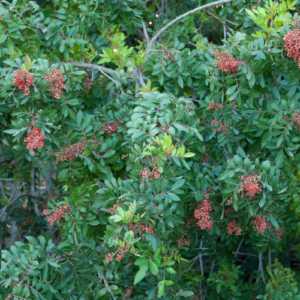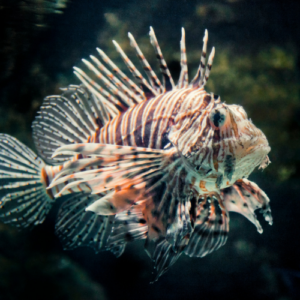
13 Mar Invasive Pest Monitoring Techniques
Defending Our Ecosystem from Invasive Pests!
In South Florida, the fight against invasive pests is ongoing. Our unique climate and ecosystem make us vulnerable to a variety of non-native species. This article dives into the world of invasive pests, highlighting the importance of monitoring and control to protect our homes and natural habitats.
Invasive pests are species that have been introduced to a new environment, often thriving at the expense of native flora and fauna. They can disrupt ecosystems, cause economic damage, and pose health risks. Recognizing these pests early is crucial for effective management.
Invasive pests are often highly adaptable, reproducing quickly and outcompeting native species. They can be plants, animals, or insects, each bringing unique challenges to control efforts. Understanding their behaviors and life cycles is key to developing effective management strategies.
The introduction of invasive pests can lead to a decline in native species, altering the balance of ecosystems. Economically, they can damage crops, infrastructure, and property, leading to significant financial losses. Monitoring these pests is essential to minimize their impact.
Addressing Invasive Threats
Our region is home to several invasive pests, each with its own set of challenges. From the Burmese python to the lionfish, these species have made headlines for their impact on local wildlife and habitats.
The Burmese python is a well-known invader in the Everglades. This large snake preys on native birds and mammals, disrupting the food chain. Efforts to control its population include hunting programs and research into its behavior.
The lionfish is a striking but harmful invasive species in our coastal waters. With no natural predators in the Atlantic, it preys on native fish and disrupts coral reef ecosystems. Divers and fishermen are encouraged to remove lionfish whenever encountered.
The Brazilian pepper tree is an invasive plant that forms dense thickets, crowding out native vegetation. Its removal is challenging but necessary to preserve biodiversity. Regular monitoring and management are crucial to prevent its spread.
Invasive Species Surveillance
Detecting invasive pests early is crucial for effective control. Various monitoring techniques are employed, from traditional traps to modern technologies.
Traps are commonly used to capture invasive insects and animals. Visual surveys by trained professionals or volunteers also play a vital role in detecting the presence of invasive species. These methods provide valuable data on pest populations and distribution.
Advancements in technology have introduced remote sensing as a tool for monitoring invasive pests. Satellites and drones can capture images and data over large areas, helping to identify infestations and monitor changes over time.
Early detection allows for prompt action to control or eradicate invasive pests before they become established. Regular monitoring is essential to identify new threats and assess the effectiveness of control measures.
Preventive Measures for Homeowners
Homeowners play a crucial role in preventing the spread of invasive pests. Simple actions can make a big difference in protecting your property and the environment.
Regularly inspect your home for cracks and gaps where pests can enter. Seal these openings to prevent invasive insects and rodents from finding their way inside.
A tidy yard reduces hiding spots and breeding grounds for pests. Keep your lawn trimmed, remove debris, and manage standing water to discourage invasive species.
Conduct regular inspections of your property for signs of invasive pests. Early detection can prevent small problems from becoming major infestations.
Public Awareness in Pest Management
Involving the community in monitoring efforts is vital for the success of invasive pest management. Public awareness and participation can significantly enhance detection and control efforts.
Educating the public about invasive pests and encouraging them to report sightings can lead to earlier interventions. Many areas have hotlines or online platforms for reporting invasive species.
Volunteer programs, such as citizen science projects, engage the community in monitoring invasive pests. These programs provide valuable data and help raise awareness about the importance of controlling invasive species.
Public education campaigns can inform residents about the risks of invasive pests and how to prevent their spread. Awareness is a powerful tool in the fight against invasive species.
Pest Control Plans for Invasive Threats
Professional pest control experts are essential in the battle against invasive pests. Their expertise and resources are invaluable in monitoring and managing these threats.
Pest control professionals have the knowledge and skills to identify invasive pests and develop effective control strategies. They stay updated on the latest techniques and technologies for managing invasive species.
Working with a pest control company allows for the development of a tailored plan to address the specific invasive pests in your area. These plans can include a combination of monitoring, prevention, and treatment strategies to protect your property and the environment.
Professional pest control services provide timely and effective solutions to invasive pest problems. Their expertise can save homeowners time and money by preventing costly damage and ensuring the health and safety of their property.
Conclusion
Monitoring and managing invasive pests is a critical task in South Florida. Homeowners, communities, and professional pest control experts must work together to stay vigilant and proactive in the fight against these threats.
By implementing effective monitoring techniques, preventive measures, and engaging in community involvement, we can protect our homes, ecosystems, and economy from the impact of invasive pests.
The importance of early detection and swift action cannot be overstated. Regular inspections and prompt reporting of sightings are key to preventing the establishment and spread of invasive species. With the right strategies and collaboration, we can ensure a pest-free environment for future generations.
Remember, everyone has a role to play in monitoring invasive pests. Stay informed, stay involved, and together, we can safeguard our beautiful South Florida from the threats of invasive species.




No Comments